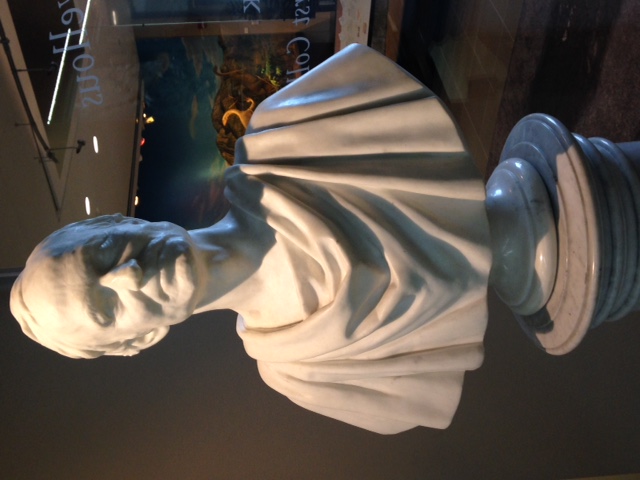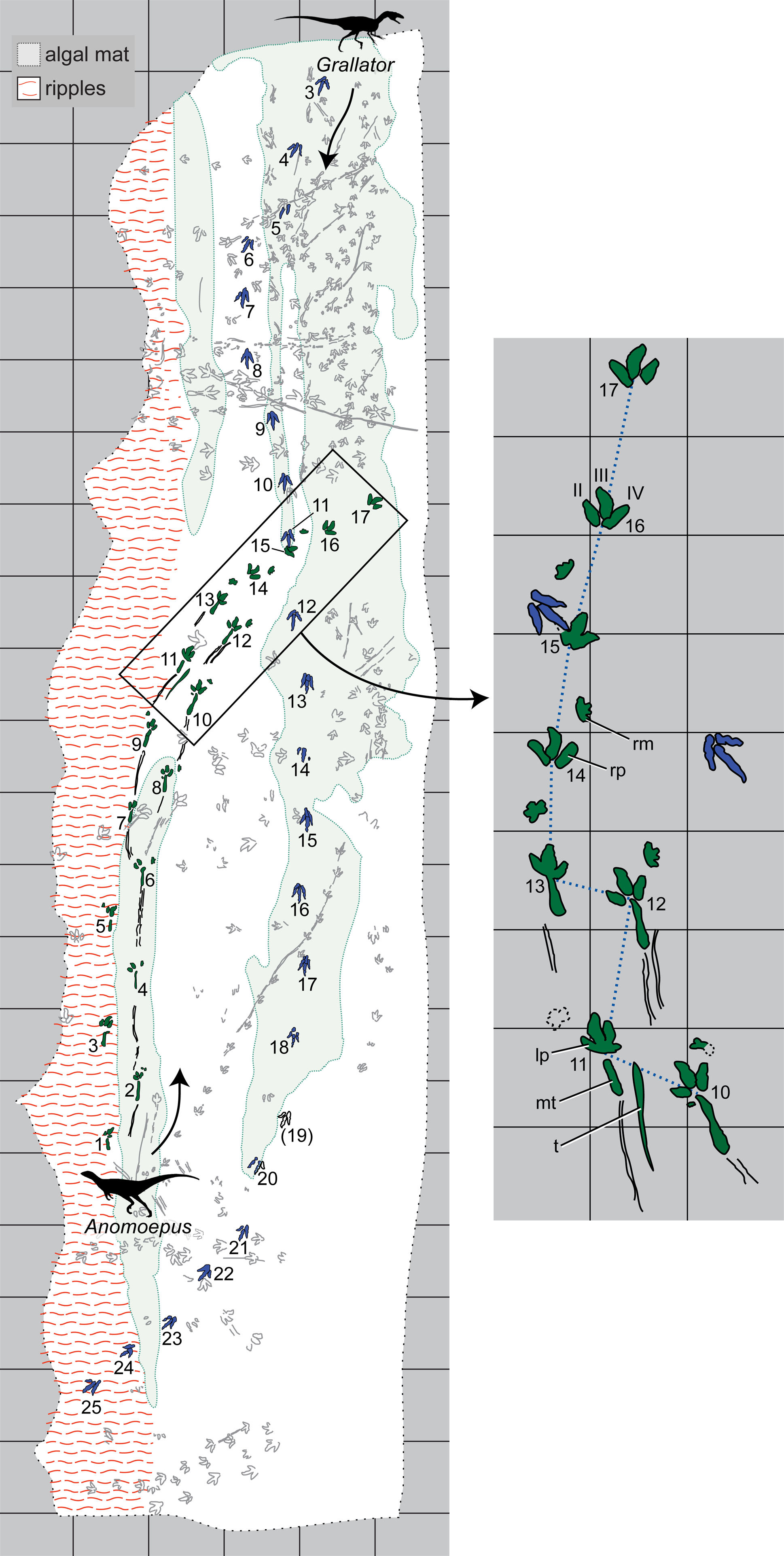|
Sauroidichnites Abnormis
''Sauropus'' is a dinosaur imprint. One imprint given this name may be from a sitting dinosaur, perhaps made by a dinosaur similar to '' Psittacosaurus''. The authors of ''The Beginning of the Age of Dinosaurs: Faunal Change across the Triassic-Jurassic Boundary'' argue that the name should be abandoned, because the original type specimen (from a slab found in Middleton, Connecticut) is "so worn as to be indeterminate", a second specimen "shows no indication whatsoever of manus impressions" and is judged to be a mix of impressions from different animals, a third specimen is "a poor but typical '' Anomoepus'' sitting trackway", and "all other specimens cited as examples of ''Sauropus'' (E. Hitchcock, 1858) prove to be either very sloppy and indeterminate tracks ... or good specimens of ''Anomoepus''".''The Beginning of the Age of Dinosaurs: Faunal Change across the Triassic-Jurassic Boundary'', edited by Kevin Padian (1988). Pag79 See also * List of dinosaur ichnogenera Refere ... [...More Info...] [...Related Items...] OR: [Wikipedia] [Google] [Baidu] |
Edward Hitchcock
Edward Hitchcock (May 24, 1793 – February 27, 1864) was an American geologist and the third President of Amherst College (1845–1854). Life Born to poor parents, he attended newly founded Deerfield Academy, where he was later principal, from 1815 to 1818. In 1821 he was ordained as a Congregationalist pastor and served as pastor of the Congregational Church in Conway, Massachusetts, 1821–1825. He left the ministry to become Professor of Chemistry and Natural History at Amherst College. He held that post from 1825 to 1845, serving as Professor of Natural Theology and Geology from 1845 until his death in 1864. In 1845, Hitchcock became President of the College, a post he held until 1854. As president, Hitchcock was responsible for Amherst's recovery from severe financial difficulties. He is also credited with developing the college's scientific resources and establishing its reputation for scientific teaching. In addition to his positions at Amherst, Hitchcock was a we ... [...More Info...] [...Related Items...] OR: [Wikipedia] [Google] [Baidu] |
Dinosaur
Dinosaurs are a diverse group of reptiles of the clade Dinosauria. They first appeared during the Triassic period, between 243 and 233.23 million years ago (mya), although the exact origin and timing of the evolution of dinosaurs is the subject of active research. They became the dominant terrestrial vertebrates after the Triassic–Jurassic extinction event 201.3 mya; their dominance continued throughout the Jurassic and Cretaceous periods. The fossil record shows that birds are feathered dinosaurs, having evolved from earlier theropods during the Late Jurassic epoch, and are the only dinosaur lineage known to have survived the Cretaceous–Paleogene extinction event approximately 66 mya. Dinosaurs can therefore be divided into avian dinosaurs—birds—and the extinct non-avian dinosaurs, which are all dinosaurs other than birds. Dinosaurs are varied from taxonomic, morphological and ecological standpoints. Birds, at over 10,700 living species, are among ... [...More Info...] [...Related Items...] OR: [Wikipedia] [Google] [Baidu] |
Psittacosaurus
''Psittacosaurus'' ( ; "parrot lizard") is a genus of extinct ceratopsian dinosaur from the Early Cretaceous of what is now Asia, existing between 126 and 101 million years ago. It is notable for being the most species-rich non-avian dinosaur genus. Up to 12 species are known, from across China, Mongolia, Russia, and Thailand. The species of ''Psittacosaurus'' were obligate bipeds at adulthood, with a high skull and a robust beak. One individual was found preserved with long filaments on the tail, similar to those of ''Tianyulong''. ''Psittacosaurus'' probably had complex behaviours, based on the proportions and relative size of the brain. It may have been active for short periods of time during the day and night, and had well-developed senses of smell and vision. ''Psittacosaurus'' was one of the earliest ceratopsians, but closer to ''Triceratops'' than ''Yinlong''. Once in its own family, Psittacosauridae, with other genera like ''Hongshanosaurus'', it is now considered to be s ... [...More Info...] [...Related Items...] OR: [Wikipedia] [Google] [Baidu] |
Type (biology)
In biology, a type is a particular specimen (or in some cases a group of specimens) of an organism to which the scientific name of that organism is formally attached. In other words, a type is an example that serves to anchor or centralizes the defining features of that particular taxon. In older usage (pre-1900 in botany), a type was a taxon rather than a specimen. A taxon is a scientifically named grouping of organisms with other like organisms, a set that includes some organisms and excludes others, based on a detailed published description (for example a species description) and on the provision of type material, which is usually available to scientists for examination in a major museum research collection, or similar institution. Type specimen According to a precise set of rules laid down in the International Code of Zoological Nomenclature (ICZN) and the International Code of Nomenclature for algae, fungi, and plants (ICN), the scientific name of every taxon is almost al ... [...More Info...] [...Related Items...] OR: [Wikipedia] [Google] [Baidu] |
Anomoepus
''Anomoepus'' is the name assigned to several fossil footprints first reported from Early Jurassic beds of the Connecticut River Valley, Massachusetts, USA in 1802. All four feet have left impressions. The smaller forefeet have five toes, whereas the larger hind feet have three toes. There is also an impression which might indicate where the creature rested. The footprints were discovered, amongst others, by a farm boy, Pliny Moody. E.B. Hitchcock, a clergyman, described the ''Anomoepus'' footprints and others as evidence of ancient birds. They have since been identified as belonging to a dinosaur, probably an ornithischian, as indicated by the number of toes and the absence of claws on the rear digits. Trackways assigned to ''Anomoepus'' from Western Australia, Poland and Czech Republic have also been described. ''Anomoepus'' is the name of the footprint, not of the dinosaur, the identity of which remains unknown. Ichnospecies *'' A. scambus'' Hitchcock, 1848 *'' A. ranivorus ... [...More Info...] [...Related Items...] OR: [Wikipedia] [Google] [Baidu] |
List Of Dinosaur Ichnogenera
This list of dinosaur ichnogenera is a comprehensive listing of all ichnogenera that have been attributed to dinosaurs, excluding class Aves (birds, both living and those known only from fossils) and purely vernacular terms. The list includes all commonly accepted ichnogenera, but also genera that are now considered invalid, doubtful (''nomen dubium''), or were not formally published (''nomen nudum''), as well as junior synonyms of more established names, and ichnogenera that are no longer attributed to dinosaurs. Scope and terminology There is no official, canonical list of dinosaur ichnogenera. An extensive list can be found in an appendix to Donald F. Glut's third supplement to his series of dinosaur encyclopedias (2003). The vast majority of citations are based on Glut's list; exceptions, such as more recent ichnotaxa, are noted. Synonymies are also after Glut. A B C D E F G H I J K L M N O __NOTOC__ P Q R S T ... [...More Info...] [...Related Items...] OR: [Wikipedia] [Google] [Baidu] |
Dinosaur Trace Fossils
Dinosaurs are a diverse group of reptiles of the clade Dinosauria. They first appeared during the Triassic period, between 243 and 233.23 million years ago (mya), although the exact origin and timing of the evolution of dinosaurs is the subject of active research. They became the dominant terrestrial vertebrates after the Triassic–Jurassic extinction event 201.3 mya; their dominance continued throughout the Jurassic and Cretaceous periods. The fossil record shows that birds are feathered dinosaurs, having evolved from earlier theropods during the Late Jurassic epoch, and are the only dinosaur lineage known to have survived the Cretaceous–Paleogene extinction event approximately 66 mya. Dinosaurs can therefore be divided into avian dinosaurs—birds—and the extinct non-avian dinosaurs, which are all dinosaurs other than birds. Dinosaurs are varied from taxonomic, morphological and ecological standpoints. Birds, at over 10,700 living species, are among th ... [...More Info...] [...Related Items...] OR: [Wikipedia] [Google] [Baidu] |


.jpg)

